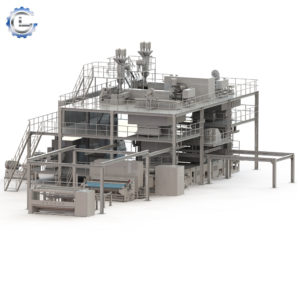PP spunbond nonwoven fabrics find a range of applications in the automotive industry due to their desirable properties such as strength, durability, lightweight nature, and resistance to chemicals and abrasion.
Here are some common applications of PP spunbond nonwoven fabrics in the automotive sector:
- Interior Trim: PP spunbond nonwoven fabrics are used extensively in the interior of vehicles for various components such as door panels, headliners, carpet backing, seat backs, and trunk liners. These fabrics provide cushioning, insulation, and noise reduction while offering aesthetic appeal and improved durability.
- Upholstery and Seat Covers: Nonwoven fabrics made from PP fibers are used in the manufacturing of seat covers and upholstery materials. They provide comfort, breathability, and resistance to wear and tear.
- Air and Fuel Filtration: PP spunbond nonwoven fabrics are utilized in automotive air filters and fuel filters. These fabrics effectively trap dust, pollen, and other particles, ensuring clean air intake and efficient fuel filtration.
- Battery Separators: Nonwoven fabrics made from PP fibers are employed as battery separators in automotive batteries. They provide a barrier between the positive and negative plates, preventing short circuits while allowing the flow of ions.
- Engine Components: PP spunbond nonwoven fabrics are used in engine compartments for applications such as heat shields, gaskets, and acoustic insulation. They provide thermal resistance, noise reduction, and help prevent the transfer of vibrations.
- Carpeting: Nonwoven fabrics made from PP fibers are used as backing materials for automotive carpets. They offer dimensional stability, moisture resistance, and improved durability.
- Trunk Liners: PP spunbond nonwoven fabrics are used as trunk liners to protect the vehicle’s trunk from damage, scratches, and spills. These fabrics provide strength, water resistance, and easy cleanability.
- Acoustic Insulation: PP spunbond nonwoven fabrics are used in automotive insulation systems to reduce noise and vibration. They help enhance the acoustic comfort inside the vehicle cabin.
These are just a few examples of the applications of PP spunbond nonwoven fabrics in the automotive industry. The versatility, performance, and cost-effectiveness of these fabrics make them a preferred choice for various automotive components and systems.
How are PP spunbond nonwoven fabrics manufactured for automotive applications?
The manufacturing process for PP spunbond nonwoven fabrics used in automotive applications follows the general procedure for producing spunbond fabrics. Here’s a step-by-step overview of how PP spunbond nonwoven fabrics are manufactured for automotive applications:
- Polymer Preparation: Polypropylene (PP) resin is selected as the raw material for the fabric. The PP resin is typically in the form of pellets or granules. It is mixed with any necessary additives or colorants according to the desired fabric specifications.
- Extrusion: The PP resin is melted in an extruder, which is a specialized machine that heats and melts the resin. The molten polymer is then forced through a spinneret, a device with multiple small holes or slots. The spinneret determines the number, size, and arrangement of the filaments.
- Filament Formation: As the molten polymer passes through the spinneret, it is extruded into thin filaments. These filaments are in a semi-molten state and still retain their heat.
- Quenching: The extruded filaments are rapidly cooled using a quenching process. This can involve passing the filaments through a chamber with cool air or water jets. The rapid cooling solidifies the filaments and locks in their structure.
- Web Formation: The solidified filaments are laid onto a moving conveyor belt or drum to form a web. The filaments are entangled randomly, creating a nonwoven structure. This web serves as the precursor to the final fabric.
- Bonding: The web of filaments undergoes a bonding process to strengthen the fabric. This can be achieved through various methods:
- Thermal Bonding: The web is passed through heated calendar rolls or heated plates, which apply heat and pressure to bond the filaments together.
- Chemical Bonding: Adhesive materials or binders are applied to the web, either in liquid form or as pre-applied powders. The web is then heated to activate the adhesive and bond the filaments.
- Mechanical Bonding: Needles or barbed rollers are used to mechanically entangle and interlock the filaments, creating a bonded fabric.
- Finishing: After bonding, the fabric may undergo additional finishing processes to enhance its properties. This can include treatments such as calendaring (smoothing the surface), embossing (adding texture), or coating (applying a layer for specific functionalities like water repellency or flame retardancy).
- Inspection and Cutting: The finished fabric is inspected for quality control, ensuring it meets the desired specifications. The fabric is then cut into rolls or sheets of appropriate dimensions for automotive applications.
It’s important to note that the specific machinery, settings, and parameters used in the manufacturing process can vary depending on the equipment manufacturer and the desired fabric characteristics. The process outlined above provides a general overview of the steps involved in manufacturing PP spunbond nonwoven fabrics for automotive applications.
